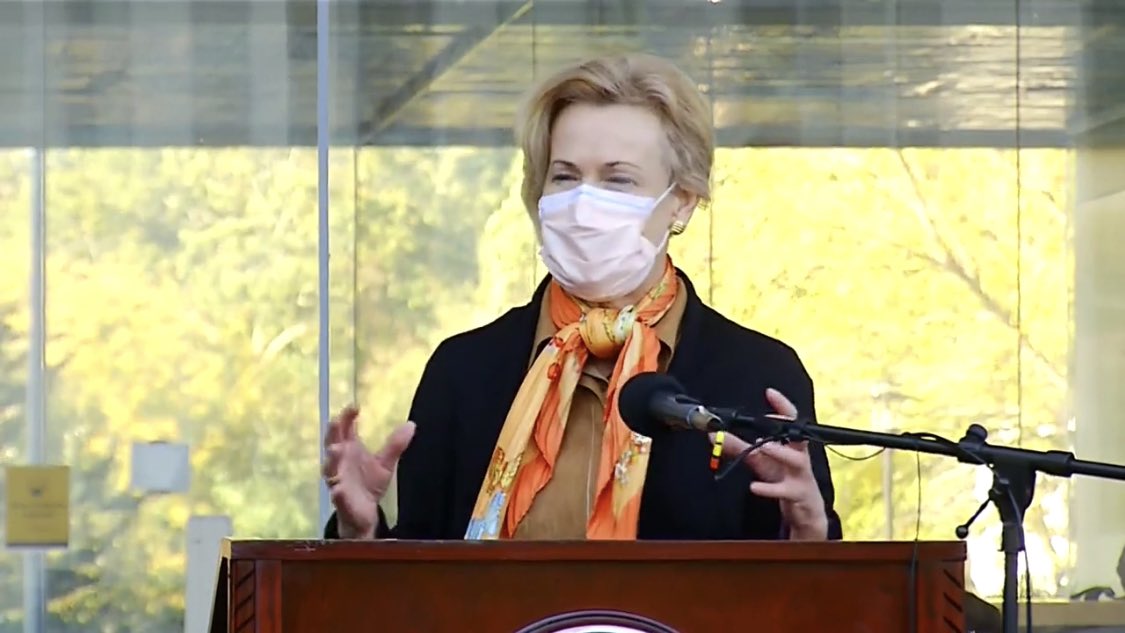
Cov19 analysis for State of RI. RI was hit hard in the Spring like other nearby states. Are we setting up for round 2 or is something else happening? Read on. 1/x
First we look at testing. RI breaks out new tests and repeat tests. Note testing is up huge since Spring, but 75% of the tests are now retests. We can see the jump in retests coinciding with colleges and schools starting up. Presumably most of these retests are mandated screening 

We are going to ignore “cases” as a metric because anyone paying attention knows that cases alone is useless. Test positivity rate though can be useful. Here we see that first time test positivity is up steeply while repeat test positivity is effectively nil. 

Interestingly, 1st time test positivity tracks hosp admissions very closely. Chicken? Egg? Is everyone in the hospital getting a positive test? Or is that why they are admitted? Note that RI counts any + test in a hosp as a C19 hospitalization. So are they hosp with or from? 

Now we look at the familiar hospital and icu census along with deaths. Here we start see that something is different now. Deaths have barely budged even tho hosp started ramping 7 weeks ago. In Spring, deaths lagged hosp by 2 weeks. This is good news. Icu also looks better. 

Might there be some new reasons for rapidly growing hosp census that are not due to severity of illness? Note the remdesivir approval date. Treatment requires hosp of 3-10 days and we see an apparent inflection there.
https://twitter.com/AJKayWriter/status/1327405829620789249
Also, a recent article indicates hosps are having difficulty discharging elderly and psych patients. LTC resisting, and patients need 2 neg tests. Psych care is full (wonder why). wpri.com/target-12/dive…
So how bad is the current hosp census versus average? We know hosp goes up this time of year every year. We also know there has been near 0 flu. Brand new analysis from @Rational_Ground crew indicates we are about 100 patients or 7% above average in hosp census. Not bad.
https://twitter.com/justin_hart/status/1327740997078380544
Another important metric is the growth rate of hosp, icu, and deaths. The initial slope determines the ultimate severity of these curves and slopes are way down vs Spring:
Hosp 3.7/day vs 8.2/d
ICU 0.5/d vs 2/d
Deaths 0.1/d vs 0.7/d
So icu growing 4xslower and deaths 7xslower.
Hosp 3.7/day vs 8.2/d
ICU 0.5/d vs 2/d
Deaths 0.1/d vs 0.7/d
So icu growing 4xslower and deaths 7xslower.

Hopefully these trends indicate that severity is much reduced vs the Spring, and we will not see much in the way of excess fatalities. The Spring curve was a classic Gompertz epi curve. What we are seeing now is imo a seasonal flare from a now endemic virus.
Also, repeat surveillance testing seems to be accomplishing little other than wasting time and funds and creating a percentage point of likely false positives. Also note that any of these metrics are likely juiced by overly sensitive tests.
Finally, in those states (e.g., ND) that do separate hosps “from” C19 vs hosps “with” C19, about 1/3 are “with.” So we may well be 1/3 lower than reported as far as folks in the hosp *because* they have c19. /end
2 more graphs to add. First we have ICU census as a percentage of hospitalizations. No significant uptick yet. 

Finally (again) a few folks wanted to see case counts. Caveats: cases are not infections, they are not sick people. They may be, but they may also be an artifact. In any case we can clearly see that ICU and especially deaths have completely detached from cases and hosps vs Spring 

• • •
Missing some Tweet in this thread? You can try to
force a refresh






